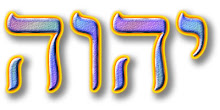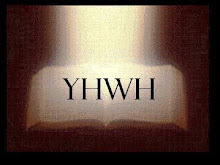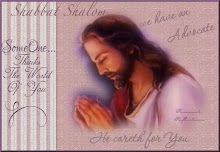I am blogging this article because I find the subject wonderful and as always, God is amazing. But I must say I prefer the Jewish name, Yeshua, and I prefer Messiah or Mashiach over Christ. AND I do NOT celebrate easter...it is pagan and is not a true holy day of God. But there is good meat here just overlook the bad.
PASSOVER:CORONATION DAY FOR JEWISH KINGS
by Gary Stearman
Although the fall festival of Rosh HaShanah marks the first day of the new Jewish calendar year, Nisan in the spring is actually considered the beginning of the annual festival cycle. The Jewish commentaries in the Mishnah tell us that the year of the reign of Jewish kings was counted from Nisan in biblical times.
In fact, in the traditional Jewish calendar, there are four legal New Year’s days:
First comes Nisan, the New Year for Kings. Next, is the 1st of Elul, the New Year for animal tithes. Then the 1st of Tishri (Rosh Hashanah) is the New Year for the civil calendar and for vegetable tithes.
Finally, the 15th of Shevat (Tu Bishvat) is the New Year for Trees and fruit tithes.
As we shall see, recognition of the first New Year celebration in the Jewish calendar becomes extremely important in understanding the finished work of Christ. When He came to His people two thousand years ago, He completed every tiny detail of prophecy. In particular, His coronation as King was no mere metaphor; it was perfect and complete.
This year, Passover and Easter come within three days of each other, with Passover arriving on April 9th and Easter on Sunday, April 12th. To Jews, it is a time to celebrate the freeing of their ancestors from Egyptian bondage by Moses, the deliverer.
Christians remember how our Deliverer, Christ, the Lamb of God, was sacrificed for us. We recall His public humiliation, His death and His resurrection. He was given a thorny crown on that day. It was painful and demeaning, but it was a real and legitimate crown, representing an actual coronation. Equally important was the blessing this crown bestowed upon the entire earth.
New Year for Kings
Before we revisit the events of His last Passover, we should review a little-known but interesting fact about this day, traditionally remembered by the Jews as the day when the kings of ancient Israel were crowned.
In fact, Nisan – the month of the Passover – marked what was known as the "New Year for Kings."
One essay on the subject says,
"For reasons as yet unclear, the beginning of the year, reckoned from the spring by the early postexilic community, came to be celebrated in the autumn in Judaism. The sounding of the ram’s horn (shofar) figured prominently in the ritual of the festival, held on Tishri 1-2, while the liturgy emphasized the themes of judgment, God’s kingship, and creation.
"Nisan 1 continued to be recognized as New Year’s day for the reckoning of the reigns of Jewish kings and for festivals. Thus, although the calendar year began with Tishri 1, Passover was regarded as the first festival of the year. Of minor significance were the New Year’s days on Elul 1 and Shevat 1, for the tithing of cattle and for trees respectively." [Old Testament Essays 1967-1998, Vol. 1, Sheffield Academic Press, 1998]
Israel’s two diasporas – in 722 and 586 B.C. – and the collapse of the Jewish Monarchy led to the recognition of Tishri and Rosh HaShanah, rather than Nisan and Passover, as the head of the year. Put another way, Jews came to honor the Civil New Year in the fall, rather than the Spiritual New Year in the spring.
The following quote from The Jewish Voice further clarifies this view:
"How do we know that Passover is Rosh HaShanah for the Kings? It is in the Tanach [Old Testament], though somewhat hidden. How do we know that the Kings of Israel are crowned at Passover? In I Kings, it says this: ‘… in the fourth year of Solomon’s reign over Israel, in the month of Zif, which is the second month, that he began to build the House of Adonai.’ (I Kings 6:1) It is repeated in II Chronicles 3:2 as well. The second month of the reign of King Solomon – which means Solomon was crowned the month before! The month of Zif is now known as the month of Iyar, which comes after the month of Nisan, when Passover is. From this understanding, we can check it with the other kings of Israel as well. There was a debate between the House of Hillel and the House of Shamai, whether it was on the 15th or the 1st of the month, but the 15th is Passover night, and this became the common understanding."
In the ancient world, then, Israelites regarded the 1st of Nisan as the New Year for Kings, and the festival of Passover as the actual coronation day.
Little known to Gentiles, this amazing truth throws new light on that most historic of all Passovers. The day that Jesus was crucified was also the traditional Jewish day for the Coronation of Kings!
The Coronation
On the morning of that day – Passover, the 15th of Nisan – Jesus was given a public coronation, recognized by both Roman and Jewish leaders. As we shall see, this fact is carefully documented in Scripture.
The night before, He was arrested and taken to a Jewish trial, first before Annas, then in the presence of the high priest Caiphas and the assembled Sanhedrin.
Early in the morning, He was bound and taken to Pilate, who found no fault in Him. The cynical Roman Procurator sent him to Herod Antipas, who scoffed at any claim that He might be of royal blood.
Then, clothing him in regal apparel, Herod sent Jesus back to Pilate. This time, Jesus was tried in public, before a screaming mob, who shouted, "Crucify Him!" Pilate and Herod found no guilt in Him worthy of death, but in the end, the crowd ruled, urging Pilate to free the insurrectionist Barabbas and crucify Jesus in his place.
In the Gospel of John, we find the dramatic recitation of the Roman mockery that preceded His crucifixion. Pilate and the priests intertwine in a strange conspiracy that leave no doubt about the nature of Christ’s coronation:
"Then Pilate therefore took Jesus, and scourged him.
"And the soldiers platted a crown of thorns, and put it on his head, and they put on him a purple robe,
"And said, Hail, King of the Jews! and they smote him with their hands.
"Pilate therefore went forth again, and saith unto them, Behold, I bring him forth to you, that ye may know that I find no fault in him.
"Then came Jesus forth, wearing the crown of thorns, and the purple robe. And Pilate saith unto them, Behold the man!
"When the chief priests therefore and officers saw him, they cried out, saying, Crucify him, crucify him. Pilate saith unto them, Take ye him, and crucify him: for I find no fault in him.
"The Jews answered him, We have a law, and by our law he ought to die, because he made himself the Son of God"
"When Pilate therefore heard that saying, he was the more afraid" (John 19:1-8).
Here, Jesus is crowned, clothed in a royal garment and presented by the Gentile Pilate, as "the man." Perhaps it would be more accurate to say, "the one." It is as though Pilate is saying to the Jews, "Here is the one you’ve been looking for, your King, the one you call Messiah." No doubt, he knew about the Jewish national dream that a political and spiritual Savior would come to bring in their promised Kingdom.
Having already condemned Jesus in their hastily-convened night court, the Jews responded with horror at this thought. They made no effort to hide their real charge against Him: He had proclaimed His own deity, making himself equal with God.
When Pilate heard their charge, he was filled with fear that Jesus was the "real thing," and that this was the reason a corrupt priesthood wished Him dead. He went back inside and spoke with Jesus once more:
"And went again into the judgment hall, and saith unto Jesus, Whence art thou? But Jesus gave him no answer.
"Then saith Pilate unto him, Speakest thou not unto me? knowest thou not that I have power to crucify thee, and have power to release thee?
"Jesus answered, Thou couldest have no power at all against me, except it were given thee from above: therefore he that delivered me unto thee hath the greater sin.
"And from thenceforth Pilate sought to release him: but the Jews cried out, saying, If thou let this man go, thou art not Caesar’s friend: whosoever maketh himself a king speaketh against Caesar.
"When Pilate therefore heard that saying, he brought Jesus forth, and sat down in the judgment seat in a place that is called the Pavement, but in the Hebrew, Gabbatha.
"And it was the preparation of the passover, and about the sixth hour: and he saith unto the Jews, Behold your King! (John 9:9-14).
After this exchange, Pilate elevated the level of his announcement to the Jews and their leaders. Before, he had simply said, "Look, here’s the man." Now, however, he declared, "Look, here’s your King!" Did he really recognize Jesus as King and Messiah? As a pagan and a worshipper of Caesar as god, he could do no such thing.
But without a doubt, he recognized Jesus as the man the Jews had been waiting for, and he publicly counseled the Jews to receive their king.
And thus, in Nisan, the month of the New Year for Kings, and on Passover the Day of Coronation, Jesus was recognized by both Jewish and Gentile leaders as the King. Furthermore, He had been enrobed, crowned and formally presented. Everything required for a legitimate coronation had been accomplished. And ever since that eminent day, Scripture has stood as its witness.
To emphasize the truth of this matter, the Bible tells us that as Jesus was sent forth to His crucifixion, a title was placed over his head. Traditionally, such a title was affixed above the head of a victim, stating his crime … the reason for the crucifixion. But this time, something was different. Scripture clearly states that Pilate wrote the title himself, stating what he had, by this time, come to accept as some form of the truth:
"And Pilate wrote a title, and put it on the cross. And the writing was, JESUS OF NAZARETH THE KING OF THE JEWS" (Jn. 19:19).
The Jews begged him to change the wording of the sign:
"Then said the chief priests of the Jews to Pilate, Write not, The King of the Jews; but that he said, I am King of the Jews.
"Pilate answered, What I have written I have written" (Jn. 19:21,22).
The wording makes it clear, not only that Pilate had personally written the sign, but that he recognized Jesus as King of the Jews. Through the hand of a pagan Roman Procurator, the Spirit of the Lord spoke with complete and final authority. Jesus was King!
The Curse Upon the Ground
At the judgment of the sin in the Garden of Eden, God pronounced His curse upon the Serpent and the woman. Then He turned to Adam, who had originally been given dominion over the soil, its plants and livestock and turned that blessing to a curse:
"And unto Adam he said, Because thou hast hearkened unto the voice of thy wife, and hast eaten of the tree, of which I commanded thee, saying, Thou shalt not eat of it: cursed is the ground for thy sake; in sorrow shalt thou eat of it all the days of thy life;
"Thorns also and thistles shall it bring forth to thee; and thou shalt eat the herb of the field;
"In the sweat of thy face shalt thou eat bread, till thou return unto the ground; for out of it wast thou taken: for dust thou art, and unto dust shalt thou return. (Gen. 3:17-19).
Because of Adam’s sin, the ground was cursed with all manner of noxious weeds, here called, "thorns … and thistles." The result was a continual battle between man and his environment, with toil and sweat to mark his progress. Job stated it well:
"Let thistles [thorns] grow instead of wheat, and cockle instead of barley. The words of Job are ended" (Job 31:40).
The Crown of Fulfillment
At His crucifixion, Christ took upon Himself the sins of the world. He did so in the most literal fashion. As we have seen, the mocking crowds crowned Him King upon the very day reserved in the Jewish calender for the Coronation of Kings.
Upon His head was a crown. Its thorns represent the result of Adam’s sin – the curse of the ground – documented in Genesis 3:18. The thorns for the crown were gathered by Roman soldiers who wove it into a suitable shape, then forced it onto His head, doubtless producing a series of bleeding wounds.
Thus, as His blood poured over the thorns, Jesus took upon Himself not only the sin of mankind, but the curse upon the earth! In that historical moment, we were washed in the blood of the Lamb, and so was the earth. In His coronation, and the events that followed on that Passover day, the curse of sin upon humanity was forever broken … and the curse upon the earth removed!
May the King be praised forever!
Subscribe to:
Post Comments (Atom)










No comments:
Post a Comment